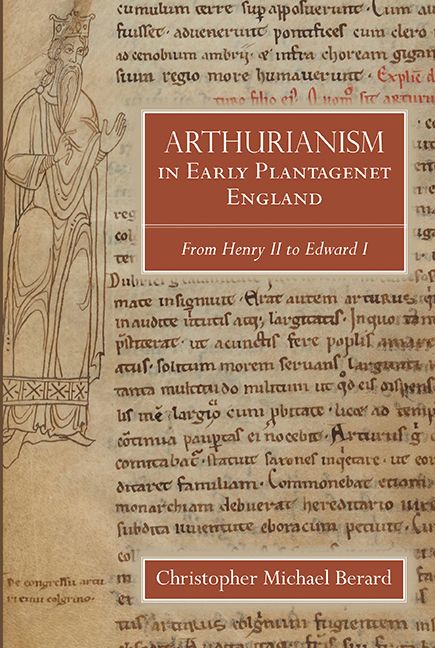Book contents
- Frontmatter
- Contents
- List of abbreviations
- Genealogical Table of the Sovereigns of England from William I to Edward II
- Introduction
- 1 Arthurianism during the reign of Henry II, 1154–1189
- 2 Arthurianism during the reign of Richard I, 1189–1199
- 3 Arthurianism during the reign of King John, 1199–1216
- 4 Arthurianism during the reign of Henry III, 1216–1272
- 5 Arthurianism during the reign of Edward I, 1272–1307
- Conclusion
- Bibliography
- Acknowledgments
- Index
- Miscellaneous Frontmatter
Introduction
Published online by Cambridge University Press: 25 March 2020
- Frontmatter
- Contents
- List of abbreviations
- Genealogical Table of the Sovereigns of England from William I to Edward II
- Introduction
- 1 Arthurianism during the reign of Henry II, 1154–1189
- 2 Arthurianism during the reign of Richard I, 1189–1199
- 3 Arthurianism during the reign of King John, 1199–1216
- 4 Arthurianism during the reign of Henry III, 1216–1272
- 5 Arthurianism during the reign of Edward I, 1272–1307
- Conclusion
- Bibliography
- Acknowledgments
- Index
- Miscellaneous Frontmatter
Summary
Arthur the Briton emerged in the twelfth century as one of the great kings of European literature. But, unlike his counterparts Alexander the Great and Charlemagne, his basis in fact is tenuous. The historical foundation for the character, if any, is a sixth-century warrior of the same name who is said to have resisted the Anglo-Saxon invasion of post-Roman Britain. The earliest surviving accounts of this ‘historical’ Arthur and his military successes were composed over two centuries after this figure's putative lifetime, and it is possible that Arthur was purely a figure of folklore that over time was historicized. By virtue of being quasi-historical and also from an obscure moment in British history, Arthur has always been a malleable character.
Although Arthurian literature is traditionally set in post-Roman Britain (400–600), medieval authors gave Arthur contemporary dress and fashioned his world after the political realities of their own. Anachronism is by no means unique to the Matter of Britain, but it is a hallmark of it. Not uncommonly, the characterization of Arthur in chronicles and romance was modeled after high and late medieval princes and potentates. Even more interestingly, there are numerous historical accounts of high and late medieval kings and noblemen fashioning themselves after the figure of Arthur and engaging in chivalric and dramatic enactments of episodes from Arthurian literature. Princes and lords, who saw themselves as imitating paladins from the distant past, were actually modeling themselves after idealized representations of their own more recent forebears. Arthurianism (Arthurian imitation and role-playing) is thus an example of life imitating art imitating life.
Pertinent for the classification of this phenomenon within larger categories of human behavior is the term ‘ostension’ as applied in Folklore Studies: the conscious adoption of a narrative as a model (or script) for human action. Recognizable, contemporary examples of ostension include copycat crimes – imitations either of documented crimes or of fictitious but practicable narratives of crime. Carl Lindahl defines ostension as ‘the folklorist's term for legendary role-playing that breaks the boundaries of play to transform itself into something far more earnest’. Imitation exists on a spectrum.
- Type
- Chapter
- Information
- Arthurianism in Early Plantagenet EnglandFrom Henry II to Edward I, pp. 1 - 12Publisher: Boydell & BrewerPrint publication year: 2019



